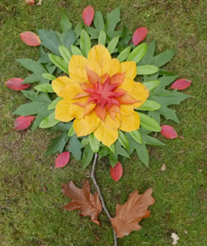TBRI Tip: Springtime Regulation

Did you know that spending time outdoors surrounded by nature does incredible, restorative things to our children's bodies and brains? With spring in full bloom, it's the perfect time to step outside our cozy homes and embrace the benefits nature offers for our mental and physical well-being.
The Challenge of Constant Attention
Every day, our children face demands for their attention - from schoolwork and books to instructions from teachers and parents. Focusing might seem simple, but it actually requires significant mental effort. This involves processing and filtering out irrelevant sensory stimuli - everything they see, hear, feel, and smell that isn't related to the task at hand. Without this rapid processing, sensory overload could occur, making it hard to concentrate on what really matters and leading to emotional dysregulation. This type of intense focus is known as directed attention, and it can be mentally exhausting.
Nature's Relief
In contrast to the constant focus required by daily tasks, nature engages our children's brains in a more relaxed way. This is called indirect attention or soft fascination. When in nature, our children can enjoy the sounds of birds, the feel of the breeze, the scent of the woods, and the sight of colorful plants - all without the need to actively focus. This gentle engagement allows their brains to recover from the fatigue of directed attention, restoring their ability to concentrate effectively.
The Benefits to our Children
Spending time in nature not only refreshes their ability to focus but also helps their nervous systems unwind and recover from sensory overload. This is particularly beneficial for neurodivergent children and those impacted by trauma, who may become overwhelmed by sensory input far more quickly than others.
Making it Happen
Commit to giving your children time outdoors every day. Even just 15 minutes can significantly enhance their ability to self-regulate and manage stress. Why not start with the fun "Wild Things Art" activity mentioned below?
For more engaging family activities that promote regulation, connection, and outdoor fun this spring, be sure to follow us on Facebook and Instagram.
Wild Things Art
Step One: Go outside. Make sure all children are safe, supervised, and only in places they are permitted to be. Each child should have a box, bag, bucket, or some sort of container. An adult should have a camera or phone to take photos.
Step Two: Gather natural treasures (sticks, rocks, leaves, shells, pinecones, flowers, weeds, etc.)
Step Three: When everyone is finished gathering, each child uses their treasures to create a picture on the ground.
Step Four: Take photos of the works of Wild Things Art.
Step Five: Leave the artistic creations there for others who might stumble upon them to enjoy.


Want to get TBRI tips and other helpful content delivered to your inbox each month? Sign up for our email newsletter here.
